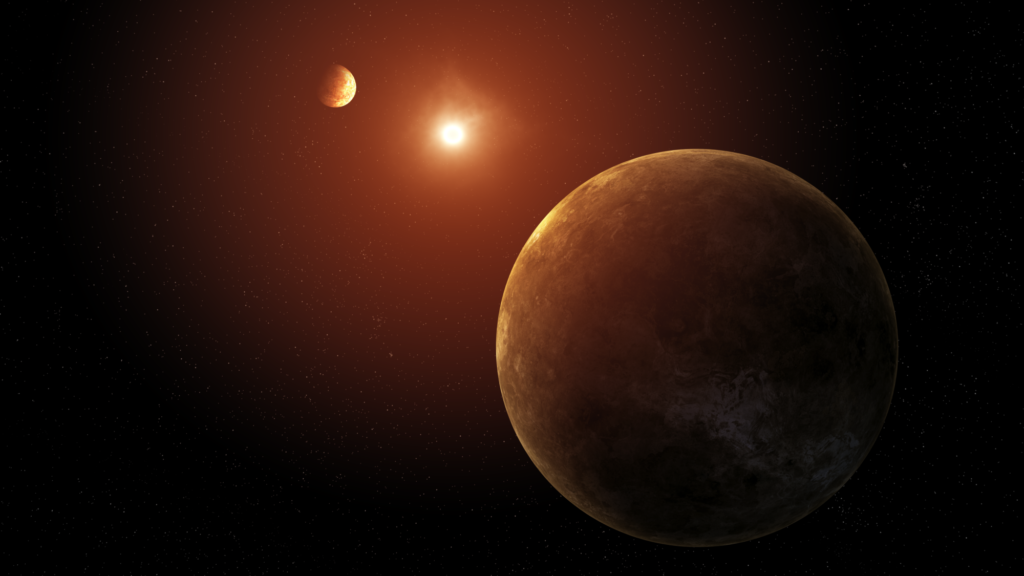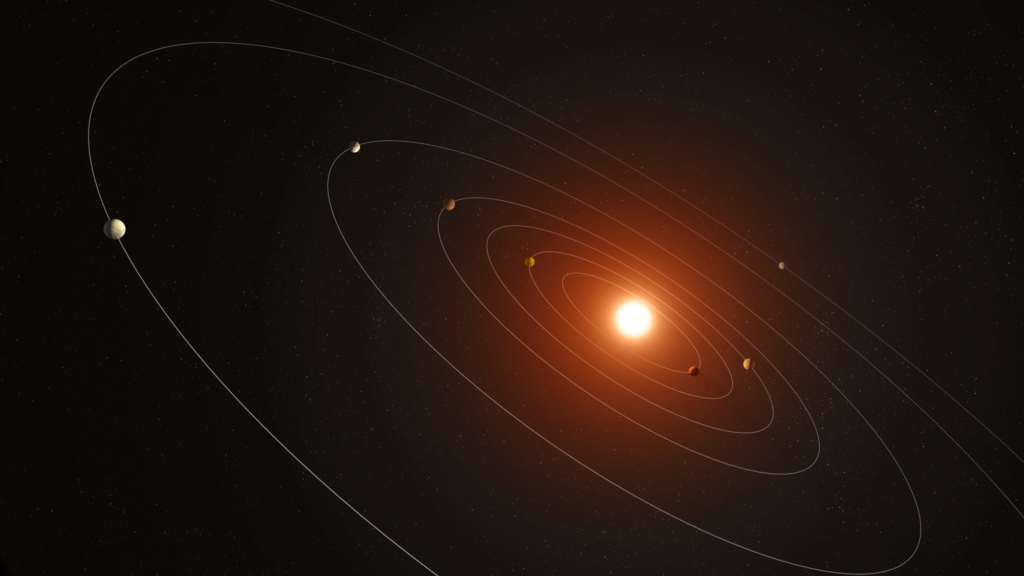Analysis of the data collected by the Kepler mission allowed scientists to make an amazing discovery. Astronomers have discovered a star system that includes at least seven exoplanets.

The Kepler telescope was launched in 2009. It became one of the first orbital observatories specifically designed to detect exoplanets. Kepler searched for new worlds using the transit method — by registering changes in the brightness of stars caused by the transits of their companions.
Over nine years of work, Kepler has managed to find and confirm the existence of over two thousand worlds beyond our solar system. Several thousand more are on the list of candidates. Astronomers are still actively analyzing Kepler data, which allows them to make new discoveries on a regular basis.
An example is the Kepler-385 star, data about which is contained in the recently published Kepler mission catalog. This luminary is located at a distance of 4,600 light-years from Earth and resembles the Sun: it is about 10% brighter and 5% hotter than it. In total, Kepler has managed to detect seven exoplanets in this system, which is close to a record. Astronomers know of few stars with more than six exoplanets.

The two inner exoplanets of Kepler-385 are slightly larger than Earth and probably also have a rocky composition. Astronomers admit that they may have a rarefied atmosphere. As for the other five exoplanets, they are twice the size of Earth and, most likely, are mini-Neptunes with a dense atmosphere.
Unfortunately, despite such a variety of exoplanets, the Kepler-385 system is hardly a favorable place for the search for life. The orbits of the seven worlds pass at a very short distance from the star. Each of them receives more heat from the sun than Mercury.
According to https://www.nasa.gov
Follow us on Twitter to get the most interesting space news in time
https://twitter.com/ust_magazine
